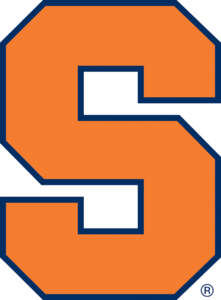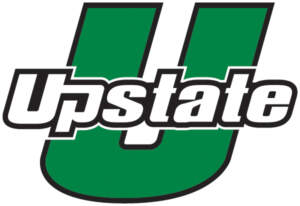by Sam Blackman
One of the rites of the spring season on many college campuses is football practice and inter-squad games.
This allows the fans an opportunity to have college football in their lives and helps increase the enthusiasm and anticipation for the upcoming season.
There’s been much discussion in collegiate football about spring practice.
Some ideas that coaches have been thinking about are playing a game or two against other colleges to help improve spring drills and to make it more interesting, not only for the fans but the players.
In the period between 1938 and 1940, Clemson played three games against Duke and one against Erskine during the toils of spring practice. Of course they were exhibition games, but it is thought that it helped the squads the following fall. For many of the Clemson players who were members of the Tiger basketball team, it was just a few days after their season was completed.
The Clemson and Duke Connection
For most of the 1930s decade, Jess Neely was the head coach at Clemson and Wallace Wade was the Head Coach at Duke. The two mentors were notable coaches that had successful careers, and later both were inducted into the College Football Hall of Fame.
The two head coaches had first met at the University of Alabama.
Wallace Wade, for whom Duke’s football stadium is named, was the head coach at Alabama in 1923-30, and led the Crimson Tide to three National Championships. Jess Neely was an assistant under Wade in 1928-30. Frank Howard, an assistant football coach for Neely at Clemson, played for Wallace Wade at Alabama and Neely in 1928-30.
Alabama won the National Championship in 1930, and after this special season, Wade was named the head coach of Duke. Neely was named the head coach of Clemson, and Howard became an assistant for Neely at Tigertown.
A (Real) Spring Football Game in 1938
On March 12, 1938 in a spring game between Clemson and Duke, the two teams met in Durham, N.C. Duke’s George McAfee scored four touchdowns and passed for the fifth as Duke defeated the Tigers 30-24.
It was described as a seesaw battle. After McAfee’s 65-yard interception return for a touchdown, Clemson answered back and drove down to the Duke one-yard line and Ben Pearson scored for the Tigers on a one-yard run. Don Willis put the Tigers ahead 12-6 late in the first quarter on a three-yard touchdown run. Later, Duke evened the score as McAfee scored from the eight-yard line.
However, the Tigers took the lead again as Bob Bailey threw a 16-yard pass to Pearson for the touchdown.
The Blue Devils tied the game at 18 all, late in the second period. McAfee passed a 40-yard strike to Eric Tipton for the touchdown. Tipton would later reverse the favor in the second half.
Duke scored early in the third period as Tipton threw a 50-yard touchdown pass to McAfee to take a 24-18 lead. After a Duke interception, McAfee scored on a three-yard rush in the opening play of the fourth quarter to put the Blue Devils up 30-18. Clemson scored on a 21-yard run by Bryant midway in the fourth quarter making the score 30-24.
In the fall of 1938, Duke finished third in the Associated Press poll and finished with a 9-1 record. Clemson also enjoyed a great year in 1938, as the Tigers had a 7-1-1 record overall and a 3-0-1 mark in Southern Conference play.
In 1938, Duke was undefeated, untied, and unscored upon in the regular season, but met defeat as Southern Cal scored in the last minute of play and was victorious over the Blue Devils, 7-3 in the 1939 Rose Bowl. Tipton was an All-American in 1938.
Preparing for Clemson’s 1939 Special Season
On March 4, 1939, Clemson won the Southern Conference in basketball. It was later learned that the school turned down an invitation for the National Invitational Tournament (NIT). Clemson’s Athletic Director and Head Football Coach Jess Neely thought that the basketball players who played football needed to be out for spring practice. Banks McFadden who earned All-America honors in basketball and led the Tigers to the Southern Conference crown just two weeks earlier was leading the Tiger football team in a hard-fought spring football game against powerful Duke on March 18.
It was almost a carbon copy of the previous spring football game between the two schools, a back and forth, close to the finish classic. The game was played in Durham, N.C. again. The Associated Press described the game as an exciting one. “The two squads scored a total of seven touchdowns in a wide-open spectacular engagement which the Blue Devils captured in the last 13 seconds of play 26-20.
“Banks McFadden, the lanky all-around athletic star of Clemson who recently led the Tiger basketball team to the Southern Conference Title was his team’s big headliner. He cut loose on several fine runs and kept the Blue Devils in hot water with a running and forward passing attack that was amazingly accurate. His punting also was brilliant.”
Duke’s George McAfee opened the game early in the first period with a 60-yard run for a touchdown. McFadden started a passing barrage that ended in a five-yard toss to Shad Bryant for the Tiger score. Norwood McElveen added the extra point and Clemson led 7-6.
After a Duke drive, McAfee scored from five yards out to give Duke a 13-7 advantage. The Tigers came right back as McFadden hit Bryant on a 65-yard pass to tie the score at 13-13. The extra point was missed.
Clemson scored again late in the second quarter. Maness threw a 13-yard touchdown pass to Joe Blalock and Norwood McElveen converted on the PAT to give Clemson a 20-13 lead at the half.
In the third period, Duke tied the score as Robinson rushed for four yards to pay dirt. Ruffa booted the extra point to tie the game.
Late in the fourth quarter, McAfee led Duke down the field including a 20-yard run that put the ball deep in Clemson territory. Bolinsky carried the ball to the one-yard line with seconds to play. McAfee then scored from the one-yard line with :13 seconds remaining in the game to put the Devils up 26-20. The extra point was missed and Duke was victorious again.
This game must have given Clemson confidence. Duke at that time was enjoying much success; after all they just completed a great season and a Rose Bowl trip. That fall, the Tigers finished with a 9-1 record and was second in the Southern Conference. The Tigers were also victorious in the 1940 Cotton Bowl, the first post- season bowl for Clemson. The Tigers finished 12th in the Associated Press Poll.
Banks McFadden once said that this 1939 Spring Game with Duke was not only a classic but important to the team. “It was one of the most, if not the most exciting game I had ever played in during my career,” said McFadden. “The game was back and fourth and it was too bad more people weren’t there to see it. This game had everything. It went back and fourth, it had passing, great running plays, great defense and a dramatic finish. It was truly exciting and I think it helped us, and it gave us confidence going into the 1939 football season.”
Banks McFadden was also named All-American in football for 1939. It was a memorable season for the Tigers. McAfee of Duke was also named an All-American that season. Both McFadden and McAfee were later inducted into the College Football Hall of Fame. McAfee is also a member of the Pro Football Hall of Fame. It was a battle of each school’s most heralded players, McFadden and McAfee meeting each other on the gridiron not in the fall, but on a spring afternoon.
More Spring Football (Real) Games
In 1940, Clemson played two spring games.The Tigers defeated Erskine on March 9, 1940. Chippy Maness, a 160-pound running back scored four touchdowns in Clemson’s 33-0 victory at Historic Riggs Field. He had touchdown runs of 75, 12, 30, and 5 yards.
A week later, Duke defeated Clemson 26-0 in Durham.The Blue Devils scored three touchdowns in the first half on their way to the victory.
Wallace Wade of Duke and Head Coach Frank Howard of Clemson used their entire squads throughout the game according to reports.
How did Clemson do in 1940? The Tigers finished 6-2-1 and won the Southern Conference Title. Duke was second in the standings.
Both Duke and Clemson enjoyed success during this era and playing each other in the spring allowed the teams to sharpen their skills, and made the long drudgery of spring football shorter. It had to make spring football more fun and competitive for both teams and gave them something to build upon in preparation for the following fall.
 Syracuse
Syracuse 
 Virginia
Virginia  Florida State
Florida State  Wake Forest
Wake Forest  Miami (Fla.)
Miami (Fla.)  Alabama
Alabama  Tennessee
Tennessee  Charlotte
Charlotte  USC Upstate
USC Upstate  Ohio State
Ohio State  Georgia State`
Georgia State`  Ohio University
Ohio University  Virginia Tech
Virginia Tech  Indiana
Indiana  Tiger Classic
Tiger Classic  South Carolina
South Carolina  South Carolina
South Carolina  Campbell
Campbell  UAB
UAB  East Tennessee State
East Tennessee State  LSU
LSU  South Carolina
South Carolina  App State
App State  North Carolina A&T
North Carolina A&T  Charlotte
Charlotte  Pittsburgh
Pittsburgh  Troy
Troy  Georgia
Georgia  Cougar Classic
Cougar Classic  Georgia
Georgia  VCU
VCU  Stanford
Stanford  Elon
Elon  USC Upstate
USC Upstate  Georgia Tech
Georgia Tech  Wofford
Wofford  SMU
SMU  California
California  Queens
Queens  Georgetown
Georgetown  Norfolk State
Norfolk State  Louisville
Louisville  Charleston Southern
Charleston Southern  Mason Rudolph Championship
Mason Rudolph Championship 





